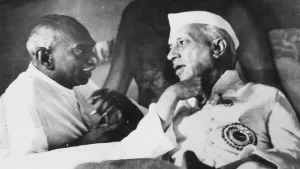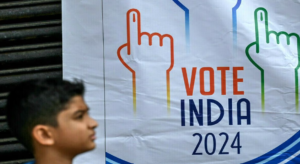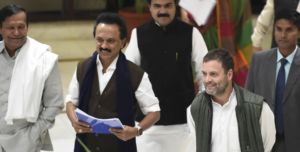On 29 October 1944, Mahatma Gandhi presciently told the peasant leader N.G. Ranga, “If the legislature proves itself to be incapable of safeguarding kisans’ interests they will of course always have the sovereign remedy of civil disobedience and non-cooperation.” The year-long agitation of farmers against the three farm laws captured this vision of Gandhi and the spirit of his first Satyagraha in Champaran. He launched this Satyagraha in 1917 to free the farmers of Bihar from exploitation by British planters, who would force them to plant indigo in vast swathes of fertile land. Eventually, the Satyagraha succeeded and the Champaran Agrarian Act of 1918 stopped forcible indigo plantation.
The Champaran Satyagraha began with Gandhi breaking the law and ended with the British regime enacting a law to end the exploitation of farmers. He pleaded guilty before the magistrate and submitted to the penalty of disobedience. He disarmed the colonial rulers with truthful articulation and the courage to accept the punishment for actions that violated the law. In his own words, Gandhi believed he was acting “in obedience of the higher law of our being—the voice of conscience”.
The government dropped charges against Gandhi and allowed him to investigate the cause of the suffering of the victims of exploitation in the colonial era. He deliberated and consulted with farmers, British officials and the exploitative planters to unearth the truth in a report outlining why farmers lived in a pitiable condition. Based on that report, the British regime established a committee that included Gandhi as a member.
That committee submitted another report, after which the British authorities framed the Champaran Agrarian Bill. It was sent for scrutiny to the Select Committee of the Bihar-Odisha Assembly and Gandhi. Eventually, it was enacted, including Gandhi’s suggestion that District Collectors should not get summary powers to act against those whose complaints against the British planters were found untrue. Thus, Gandhi’s first Satyagraha in India ended in a historic victory for farmers.
The law that ended the exploitation by British planters, which came against the backdrop of the non-violent freedom struggle, also offers invaluable lessons to governments. It teaches us that governments must draw up bills and enact laws only after deliberation, consultation and scrutiny. Tragically, the Prime Minister Narendra Modi regime has dispensed with this legacy of the Champaran Satyagraha. While framing and enacting the three farm laws and many other legislations, the ruling regime has sought to reflect only the government’s intent and point of view. Legislative intent is a by-product of debates and discussions in Parliament, but in present-day India, it is not allowed to take shape. There is, consequently, no fine-tuning of the government’s intent. The regime’s refusal to accept any demand of the Opposition parties, especially for time to discuss the farm bills or refer them to a Select Committee of the Rajya Sabha, was nothing but an attempt to thwart the legislative process and forcefully push through the government’s intent.
Chief Justice of India Justice N.V. Ramana, speaking at a function organised in the Supreme Court on Independence Day, regretted that hardly any debates take place in Parliament. He said, “There are a lot of gaps and a lot of ambiguity in the law-making process due to lack of debates. We don’t know what the intent of the legislature is. We don’t know for what purpose the laws are made.”
During 1917-18, the British regime was sensitive to the idea that a Bill should be examined by a Select Committee of the Bihar-Odisha State Assembly before it got enacted. By contrast, the Modi regime in 2020 employed the strength of its majority in the Lok Sabha and relied on a voice vote in the Rajya Sabha to pass the farm laws and impose them on farmers in complete disregard of Article 100 of the Constitution, which mandates actual voting.
The Supreme Court, whilst dealing with petitions that challenged the constitutional validity of the farm laws, observed that no consultation had taken place with farmers before framing these laws. That is why it stayed their implementation for two years and constituted a committee of experts to submit a report after consulting farmers. Such consultation should have preceded the passage of these legislations. It clearly showed the unilateral approach of the current regime.
One defining feature of the farmers’ movement is its secular credentials. Its pluralism is evidenced by the fact that its participants profess diverse faiths. Contrary to the polarisation triggered by members of the BJP in 2013 in western Uttar Pradesh, which deepened the social divisions among farmers along religious lines, the leaders of the Kisan Mahapanchayat organised in Muzaffarnagar in September 2021 recited Allah-hu-Akbar, Har-Har Mahadev and Wahey Guru. A leading figure in that panchayat, activist Medha Patkar, said, “Hindu, Muslim, Sikh, Isai, Hum Sab Hain Behen-Bhai.”
It captured the spirit of Bardoli Satyagraha of 1928, which, according to eminent historian Bipan Chandra, started after verses from the Gita and Koran were recited. Satyagarhis took vows in the name of Prabhu, the term many Hindus use to refer to god, and Khuda, a term Muslims often use. Gandhi wrote in Navajivan on 17 May 1928 that the British regime tried to divide the Bardoli Satyagraha along Hindu-Muslim lines by employing Muslim officials and Pathan hirelings in Hindu-dominated areas. He appealed to people to treat these officials and the Pathans as friends and not “fear or molest” them. He said, “… the officials are our countrymen, the Pathans are our neighbours. Ere long, the government will discover their mistake and know that the honour of a Hindu is as dear to a Mussalman as to a Hindu and vice versa.”
It is distressing that the present farmer movement was sought to be divided and defamed by some of the ruling party and government ministers. They called them Khalistani, Pakistani and anti-national. Even Prime Minister ridiculed the protesting farmers by indirectly referring to them as “andolonojeevis”. In Lakhimpur Kheri in Uttar Pradesh, several farmers were mowed down by a car that allegedly belongs to Ashish Mishra, son of the Union Minister of State for Home Ajay Mishra. Mishra senior had recently threatened the farmers and said they would be taught a lesson. While he continues to occupy the vital office despite the uproar against him, his son is in jail after the Supreme Court expressed displeasure that the Uttar Pradesh government was not doing enough to deal with the serious crime.
Secularism has been described as part of the basic structure of the Constitution by the Supreme Court in the SR Bommai judgement. In this judgment, the apex court observed that the positive aspects of secularism, apart from treating all religions equally, mandate equal respect for all faiths. By reciting multi-religious slogans, the farmers show equal respect for all religions and celebrate diversity in religious creeds. What they are doing is still the core of secularism and the Constitution. That is why this movement generates the hope that we can salvage the idea of India by saving democracy and the Constitution from the assaults by communal and divisive forces.
(The author was Officer on Special Duty and Press Secretary to President of India KR Narayanan. Courtesy: Newsclick.)




